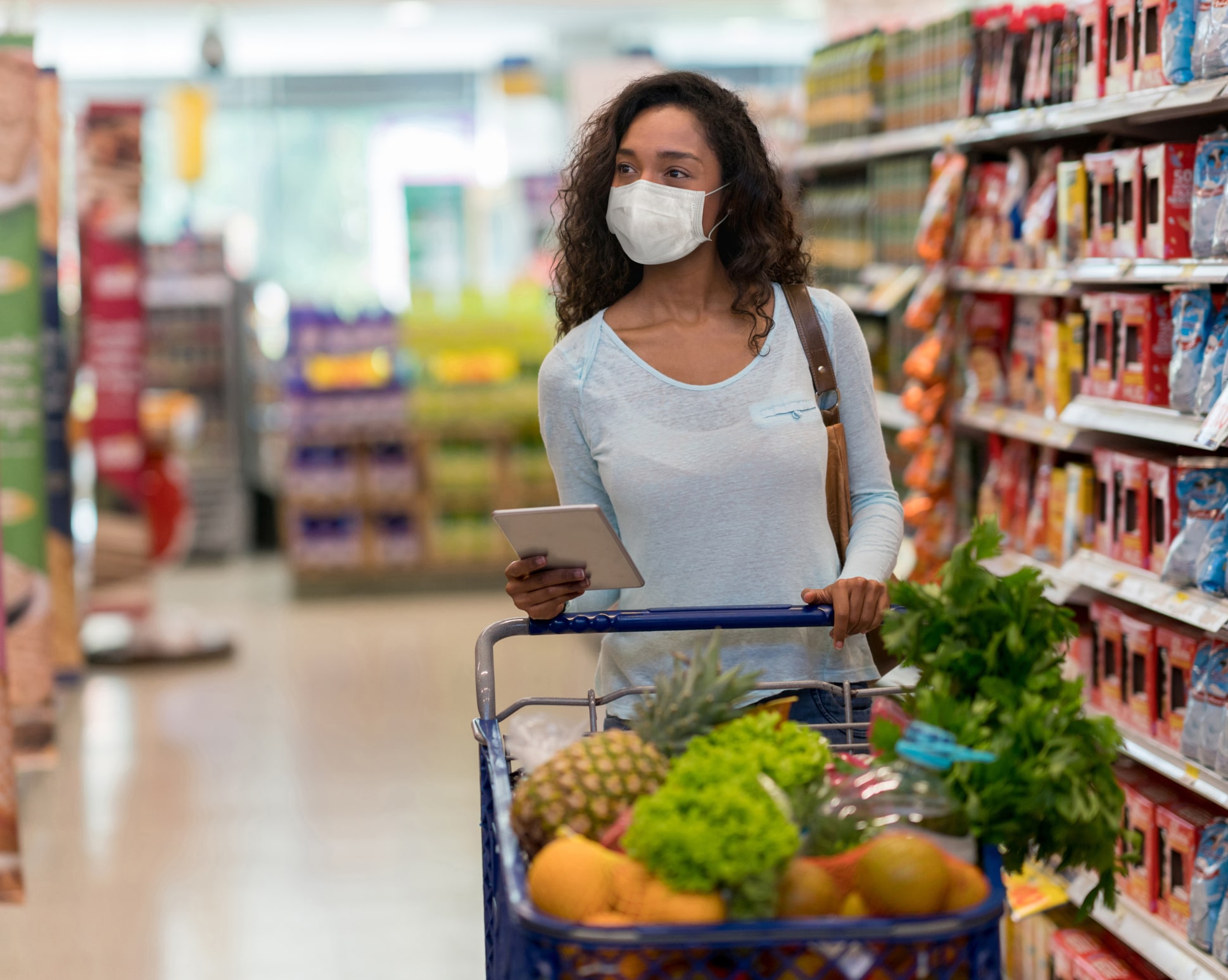
In order to limit potential exposure to COVID-19, the Centers for Disease Control and Prevention (CDC) recommends reducing the number of shopping trips you make, which often means buying more when you shop. Plan your grocery list ahead to make the most of your grocery trip.
To avoid food waste, look for shelf-stable and frozen products. This avoids the possibility of foods spoiling before you can eat them. These may include:
- dried or canned beans, peas and lentils
- canned vegetables
- dried or canned fruit in 100% fruit juice
- pasta, rice, quinoa, oats
- canned fish and chicken
- nuts, seeds and nut butters
- vegetable oils
- dried herbs and spices
- frozen foods such as vegetables, fruit, pizza/bread dough and rolls, poultry, and seafood
When it comes to purchasing fresh foods, take these tips into consideration:
- Limit the amount of fresh foods you purchase to what you can eat in the first five to seven days following your grocery visit.
- Always eat fresh produce within the first few days of purchasing, prior to eating shelf-stable and frozen foods.
- Keep in mind when planning your meals that cabbage, potatoes, onions and citrus fruits stay fresh longer than other produce such as berries, bananas, and lettuce/spinach.
- If you found that you’ve purchased more fresh foods than you can eat, freeze it before it goes bad to avoid food waste and save these foods for later use. Frozen fruits and vegetables are always a great addition to nutritious smoothies.
If you have to go to the store, be sure to:
- Wear a mask.
- Keep at least six feet away from others and follow signs regarding one-way aisles.
- Sanitize your cart and try to only touch what you plan to buy.
- Consider using curbside pick-up or delivery options as opposed to going inside the store.









